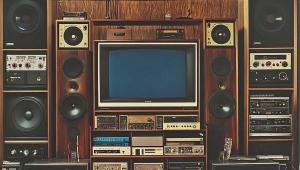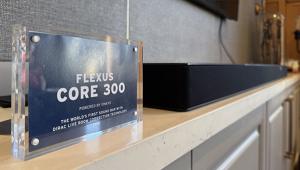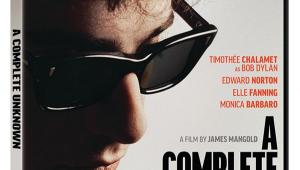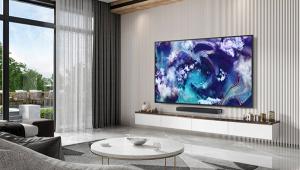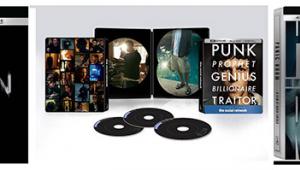Yamaha YSP-1 Digital Sound Projector Page 2
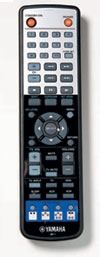 Naturally, the YSP-1's complement of connections is unusual. Instead of a banana plug or a spring-loaded clip, it has multichannel digital and stereo analog audio inputs, a subwoofer output, and a composite-video output for the onscreen menus. And unlike most other speakers, the YSP-1 has its own remote control. In addition to more conventional controls, four Beam Mode buttons are used to select different sound fields: Stereo, Stereo+3, 3-Beam, and 5-Beam.
Naturally, the YSP-1's complement of connections is unusual. Instead of a banana plug or a spring-loaded clip, it has multichannel digital and stereo analog audio inputs, a subwoofer output, and a composite-video output for the onscreen menus. And unlike most other speakers, the YSP-1 has its own remote control. In addition to more conventional controls, four Beam Mode buttons are used to select different sound fields: Stereo, Stereo+3, 3-Beam, and 5-Beam.
In the Stereo mode, the woofers on each end of the array are combined with half of the tweeters to simulate conventional left and right speakers. In the Stereo+3 mode, which is said to be more effective than the others when the YSP-1 is placed in a corner, the left (L) and right (R) stereo channels are augmented with virtual left surround (Ls), right surround (Rs), and center (C) channels. The 3-Beam mode produces, naturally, three beams - L+Ls, R+Rs, and C - for a limited surround effect. In the 5-Beam mode, all five channels (L, R, C, Ls, Rs) are produced by beaming, each with its own orientation. Only the 5-Beam mode claims to yield truly enveloping surround sound.
SETUP Hooking up the YSP-1 was a whole lot easier than setting up a conventional surround sound system. First, I placed the speaker on a shelf beneath my 50-inch, wall-mounted Samsung DLP TV, leaving a little clearance so the amps could breathe easy. I ran an optical digital audio cable from my DVD player to the YSP-1 and a composite-video cable to the TV. 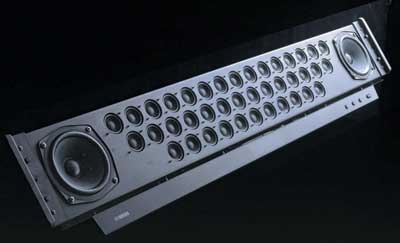
Once I powered up, I selected a preset that corresponded to the shape of my listening room (square or rectangular) and then indicated the size of the room and where I had placed the speaker. There's also a manual setup mode to fine-tune each of the sound beams or virtual speakers. This allowed me to adjust horizontal and vertical angles, focal length, and image location of the beams as well as the bass or treble.
Over the course of a week, I spent considerable time experimenting to get the best sound quality and most convincing surround field. Unlike most surround speaker systems, the YSP-1 doesn't include a subwoofer. So I added my own, taking pains to set the optimal crossover frequency, level, and time delay for the line-level sub output. Setup complete, I put on my ears.
MUSIC PERFORMANCE I started in stereo mode, listening to a number of CDs including Lenny Kravitz's Baptism. First, I wanted to make sure that the speaker's tonal quality was up to snuff. Could it reproduce the full frequency range without coloration? I listened to a lot of music, but it was the acoustic piano on Baptism that finally convinced me. It's tough to reproduce an acoustic piano, but the YSP-1 pulled it off without sounding tinny, clinky, boomy, harsh, or muffled.
Nonetheless, playing full-range music like this through the YSP-1 with the subwoofer off revealed its lack of bass. With the sub switched back in, the music had the foundation it needed.
- Log in or register to post comments









